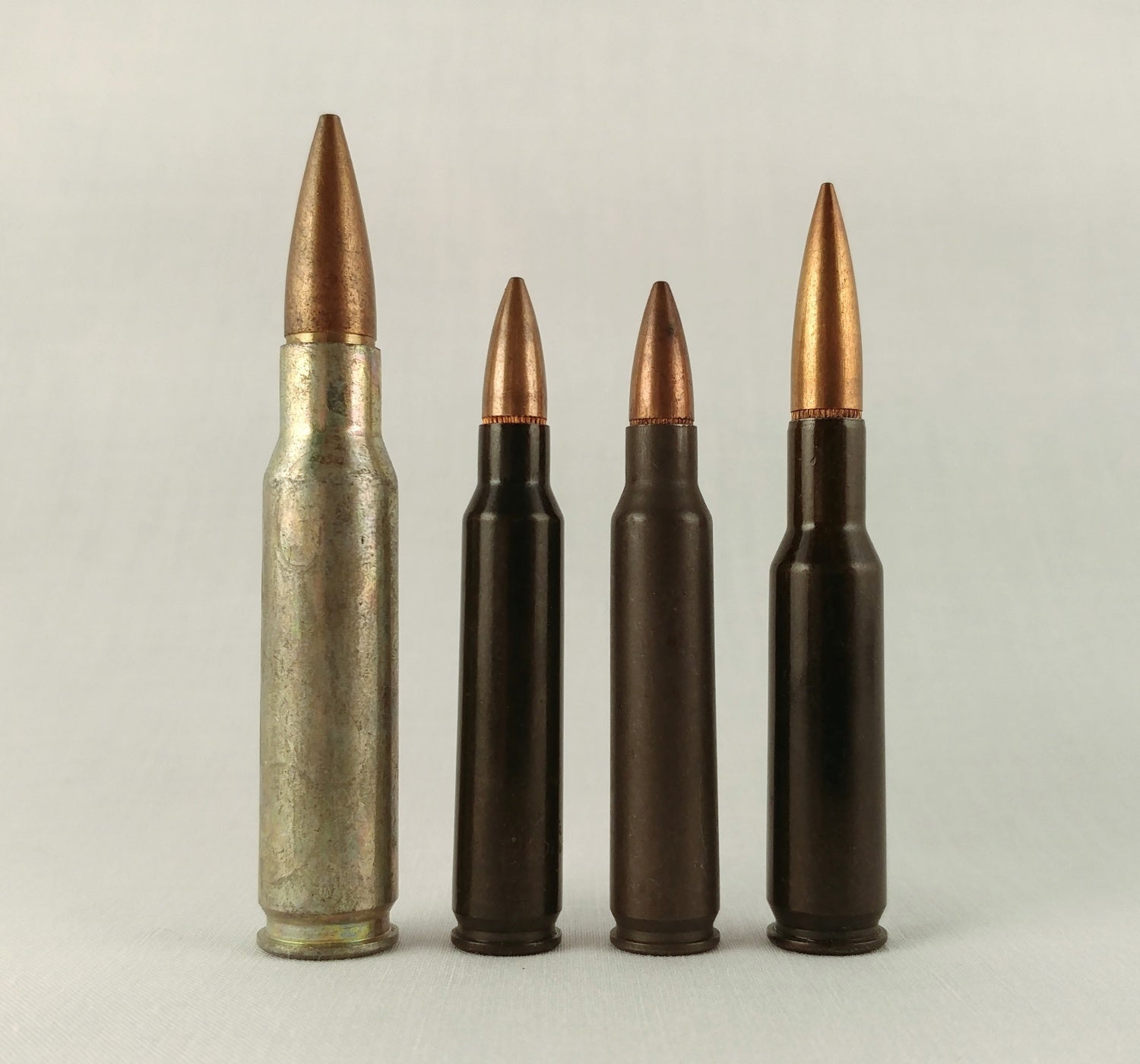During the height of the Vietnam War, the famed US Lake City Army Ammunition Plant made steel-cased 5.56mm M193 ammunition for the US Army, as part of an effort to conserve valuable copper. This ammunition did not make it past the testing phase, as the project was abandoned in 1970, but it remains an interesting might-have-been today.
Left to right: M193 (Korean), two varieties of Lake City steel-cased M193, French steel-cased F1 Ball, Barnaul Mil-Spec steel-cased .223 Remington
The project to produce a steel-cased M193 5.56mm round began in 1967 at Frankford Arsenal, and was the result of an Army-wide copper conservation program. However, that year the program was assigned to Lake City for development, in addition to a program to develop a 54gr steel-jacketed projectile as part of the same copper reduction effort. Initially, the cases were made from heat treated 1025 carbon steel, which was phosphated and then lacquered with a phenolic varnish. The first lot of 100,000 rounds was produced in November of 1967 with gilding metal jacketed bullets, followed by another 500,000 round lot in May 1968. In total, six lots of ammunition were made using the heat treated jacket: Lots LC-P-1 in November 1967, LC-S-12409 in May 1968, LC-S-12410 ( with standard 55gr gilding metal jacketed bullet) and LC-S-12415 (with 54gr gilding metal clad steel jacketed bullet) in late 1968, and LC-SP-844 and LC-SP-845 in 1969.
However, the heat treated steel cases proved to be prone to splitting during use under the relatively high pressure of the M193 round, and so in early 1969, a cold working method for forming the cases was introduced. To identify these rounds, they were given a different headstamp: “LC CW 69”. Lot LC-SP-723 of 200,000 cold worked cases was produced in March of 1969.
Aside from the case-splitting issue, both the testing boards at Aberdeen Proving Grounds and Fort Benning judged the heat treated steel cased M193 rounds satisfactory. However, the project was cancelled before the cold worked steel cased ammunition could be fully tested. Before the project’s end, though, quantities of steel cased M193 were dispatched to troops stationed in Panama for jungle testing. The results of that testing are unknown.
The Lake City steel cased M193 experiment was not the first – nor the last – time the US would toy with the idea of steel cases for small arms ammunition. Steel cased ammunition in .30-06, .30 Carbine, and (most successfully) .45 ACP was made by multiple manufacturers during WWII and in the 1950s in response to a severe copper shortage. A program to produce a steel case for the then-brand-new 7.62mm NATO was begun in 1954, and carried on all the way into 1958. Later, in the early 1970s, Frankford Arsenal would develop steel cases for the 6mm SAW round, although that project was cancelled in December of 1974, with the Arsenal’s closure soon to follow.
Left to right: zinc-coated steel cased 7.62x51mm M59 Ball, made by Lake City in 1955, 5.56mm M193 in two varieties, made by Lake City in 1968, 6mm SAW XM732 made by Frankford Arsenal in 1973.
The information in this post was largely gleaned from the excellent series of volumes on US military small arms ammunition development, written by F. W. Hackley, W. H. Woodin, and E. L. Scranton, History of Modern U.S. Military Small Arms Ammunition. If the content of this post was interesting to you, then I highly recommend these books!
 Your Privacy Choices
Your Privacy Choices


